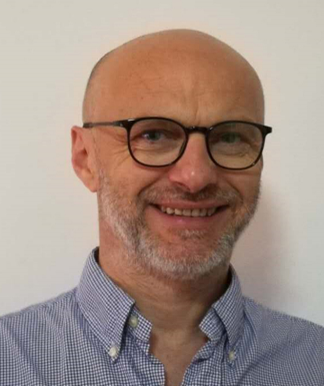
搜索网站、位置和人员

新闻与活动 活动信息
工学院学术研讨会Engineering Colloquium: Indoor Air Chemistry: An Emerging Global Concern
时间
2021年7月20日(周二)
上午10:00-11:30
地点
西湖大学云栖校区2号楼611室
主持
西湖大学工学院PI 张羽中
受众
全体师生
分类
学术与研究
工学院学术研讨会Engineering Colloquium: Indoor Air Chemistry: An Emerging Global Concern
时间:2021年7月20日(周二)上午10:00-11:30
Time:20 July, Tuesday 2021, 10:00-11:30 AM
地点:西湖大学云栖校区2号楼611室
Venue: Room 611, 6F, Building 2, Yunqi Campus
主持人:西湖大学工学院PI 张羽中
Host: Dr. Yuzhong Zhang, PI of School of Engineering, Westlake University
主讲嘉宾/Speaker:

Guangzhou Institute of Geochemistry (GIG), Chinese Academy of Sciences (CAS)
中国科学院广州地球化学研究所
Sasho Gligorovski is a Professor at Guangzhou Institute of Geochemistry (GIG), Chinese Academy of Sciences (CAS), China. Dr. Gligorovski obtained his Ph.D. at TROPOS (Germany) in 2005, followed by one-year postdoc at IRCELYON (France). From 2006 to 2017, he served as an Assistant Professor and later an Associate Professor at Aix Marseille University, France. His research interest aims to elucidate the kinetics, mechanisms, and photochemistry of multiphase and heterogeneous reactions occurring at environmental surfaces (e.g., aerosol, urban grime, ocean), and on indoor surfaces. The ultimate goal of his research is to provide quantitative information that can be used in photochemical models (regional and global scale) to better understand the topical issues of air quality and climate change in the 21st century.
In 15 years he has published more than 76 peer-reviewed papers, among which some landmark papers in prestigious journals such as Science, PNAS, Chemical Reviews, and Applied Catalysis B: Environmental. He has also published more than 20 conference proceedings and he has presented over 75 conference presentations including 9 as invited speaker and one as keynote speaker at the top geophysical and geochemistry conferences. He has received prestigious fellowships and awards including best project award nominated by the Ministry of Ecology, Sustainable Development and Energy, France, three times recipient of the visiting fellowship from the European Commission (EC) and recipient of the highly-prestigious Visiting Fellowship from the Cooperative Institute for Research in Environmental Sciences (CIRES) to join the thriving community of researchers at the University of Colorado Boulder.
Prof Gligorovski has built a strong international research profile as evidenced by his role as conference session organizer at nine conferences, five sabbatical stays at various research institutions across Europe, and was nominated as a member of International Scientific Committee at Healthy Buildings 2019 Asia, an international conference of indoor air with over 1500 participants.
讲座摘要/Abstract:
The indoor air quality community has largely been dominated by one dominant view: What are the chemical emissions of building and furnishing materials, and what is the ventilation rate to remove these pollutants? Indeed concerns about indoor formaldehyde and radon have been addressed for decades. However, it is only in the past few years that it has become apparent that our indoor environment should be viewed as a highly complex, coupled chemical system, driven by not only emissions and ventilation but also by a rich set of chemical transformations. Undoubtedly some of this chemistry is beneficial to our health by cleaning the air of toxic pollutants, whereas other processes may be making these pollutants more toxic still. Just as the outdoor atmospheric chemistry community has focused in recent years on developing an understanding of specific environments, such as forests or Polar Regions, it is just now starting to address the environment in which we live 90% of our time.
Here, I discuss some recent work which explores the photochemical processes, hitherto little-considered atmospheric mechanism: hydroxyl radicals (OH) and VOCs formation via photosensitized reactions. With examples of reactions driven by these mechanisms, it is shown that solar radiation may play an important role in indoor atmospheric chemistry, especially in the production of oxidants. Such radical-generating processes will give rise both to increased OH production and to new aerosol formation, via condensation of the oxidized products.
OH radicals, despite their low daytime concentrations, are the most important oxidant species in indoor atmosphere, controlling the concentration of organic pollutants. Understanding what controls the OH concentrations is crucial for accurately modeling the atmosphere’s oxidation capacity. By enhancing the production of OH radicals which initiate the degradation reactions of atmospheric pollutants, the photochemical reactions could have a significant impact on indoor atmospheric processes.
The results obtained are of enormous repercussions and need to be studied in the next years much more profoundly due to their still unexplored implications. It also points out that this complex chemistry occurring indoors will become even more important as the development of the modern society imposes us to be confined more and more indoors.
讲座联系人/Contact:
工学院办公室
戴老师 daixueping@westlake.edu.cn

















